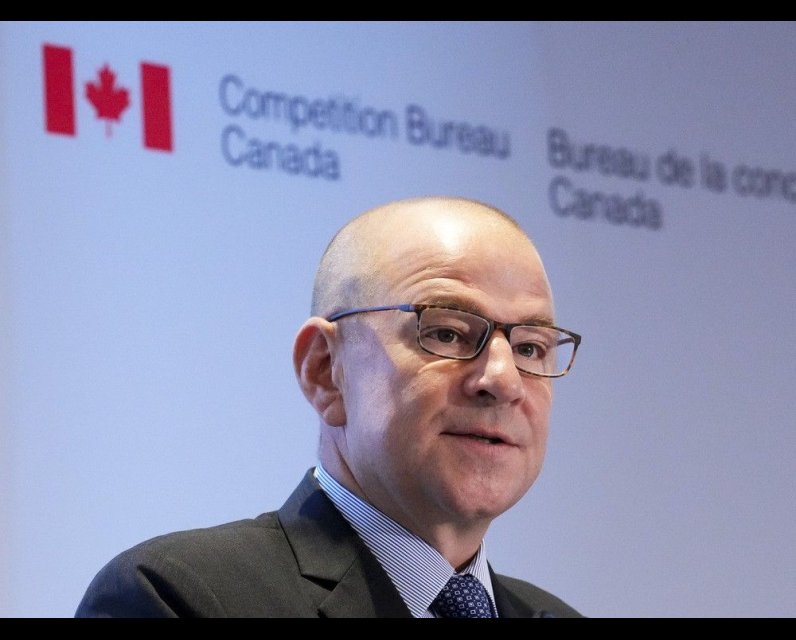Federal competition watchdog should lead removal of provincial trade barriers, researcher says

OTTAWA — Ottawa needs to give Canada’s competition watchdog greater powers so that it can lead the battle to break down protectionist inter-provincial trade barriers, a leading authority on the subject said Wednesday at a competition policy event.
Ryan Manucha, a research fellow at the C.D. Howe Institute think tank and the author of an award-winning book on inter-provincial free trade, said Canada’s Competition Bureau should be given new “soft power” to lead efforts to get provinces and territories to a “mutual recognition” of a host of rules and regulations.
Canada needs an institutionalized watchdog for internal trade and the Competition Bureau is the natural choice because it has experience at policing anti-competitive practices, Manucha said. The result would be fewer costly barriers to domestic trade and the recognition of professional qualifications, he added, which would lead to greater economic growth and greater mobility within Canada.
Speaking on a panel at the 2025 Competition Summit in Ottawa, Manucha said a country as large and as diverse as Canada needs provincial rules for some trade matters, but that it’s gone too far in this country. “We have a lot to do.”
Matthew Boswell, Canada’s Commissioner of Competition, said he agrees the country needs to take a more co-ordinated, more robust approach to competition. Boswell has in recent months been calling for a “whole-of-government” approach to boosting domestic trade, while addressing regulations, standards, licensing and other provincial and municipal rules that limit competition and make the Canadian economy more prosperous.
Boswell said during an interview at the Ottawa event that competition intensity in Canada has been declining, making efforts to boost inter-provincial trade even more urgent.
“We’ve been getting worse over time.”
Both Manucha and Boswell cited the example of Australia’s federal Productivity Commission and its National Competition Policy, a set of reforms between 1995 and 2005 that extended competition law to all professions and sectors, including utilities and others dominated by public sector organizations. All levels of government also agreed to review their laws and regulations to remove unjustified barriers to competition.
Unlike Canada’s efforts at reducing domestic trade barriers that have always relied on voluntary support from provincial and municipal governments, the Australian plan included binding commitments and a National Competition Council that represented independent authority. Boswell said Australia’s efforts to increase competition raised gross domestic product (GDP) by 2.5 per cent.
Canada’s federal government has made improved domestic trade a priority, particularly since U.S. tariffs imposed this year have curtailed key Canadian exports such as steel and aluminum. Earlier this year, Ottawa removed all federal exceptions to domestic free trade, but the many provincial, territorial and municipal barriers are still subject only to political pressure, not actual enforcement.
Industry Minister Mélanie Joly told the Ottawa Summit that the Liberal government will be “hawkish” on competition, part of a broader effort to bring costs down. “Competition is another way we are lowering prices,” she said. “It keeps prices fair, it drives innovation.”
Joly was unavailable for an interview, but she also told the gathering that the government has already made changes in telecommunications and housing that will improve competition to the benefit of consumers.
Boswell later told the gathering of competition lawyers, advocates, bureau officials and others that competition is one of the most effective tools for fighting rising prices, not to mention boosting services and innovation. He cited a recent bureau study that found that airfares drop by an average of 9 per cent when a single new competitor begins flying between two cities.
With vigorous competition, businesses must provide the products consumers want,” Boswell said, “and offer them at prices they are willing to pay. This means that, in a competitive market, the consumer holds the power.
“When there is limited competition, incumbent businesses make the rules.”
The challenge of domestic trade barriers in Canada can be traced back to pre-Confederation. The 1995 Agreement on Internal Trade was the first significant effort to reduce those barriers, but it had minimal effect because it included too many exemptions and not enough enforcement. That agreement was updated in 2017 with the Canada Free Trade Agreement. But that deal was also plagued by exemptions on everything from alcohol to trucking to legal professions and still lacked enforcement.
National Post
Our website is the place for the latest breaking news, exclusive scoops, longreads and provocative commentary. Please bookmark nationalpost.com and sign up for our daily newsletter, Posted, here.



Comments
Be the first to comment